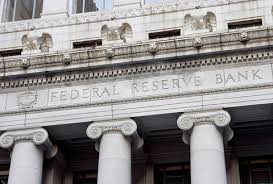 On Wednesday, the Federal Reserve raised its short-term interest rate by a quarter percentage point, a move that is most likely to impact home equity lines of credit (HELOCs) immediately.
On Wednesday, the Federal Reserve raised its short-term interest rate by a quarter percentage point, a move that is most likely to impact home equity lines of credit (HELOCs) immediately.
The increase in rates, that was widely anticipated by the industry, come on the back of a strengthening labor market and an economy that has been growing at “a solid rate,” according to a statement released by the Fed. The increase points to a target range of 1.75 percent to 2 percent federal funds rate, while “supporting strong labor market conditions and a sustained return to 2 percent inflation.”
The statement also pointed to at least two more rate hikes during the year, which will bring the total number of rate increases to four in 2018.
According to Sam Khater, chief economist at Freddie Mac, the Fed rate hikes are less likely to impact long-term mortgage loan borrowers this time around. "The Federal Reserve announced their decision to raise the federal funds rate by 25 basis points," he said. "One thing to point out is that there are fewer consumers today whose debt is tied to short-term rates, and because the majority of consumer debt is from mortgages, this means the recent short-term rate hikes will be less impactful than what was seen in the mid-2000s."
However, the impact of these hikes is most likely to be felt on HELOCs immediately. “With the Fed increasing the federal funds rate, the interest rates on credit cards and HELOCs will rise within a billing cycle or two,” said Holden Lewis, Research Analyst at NerdWallet.
Since adjustable rate mortgages (ARMs) and HELOCs are based on short-term rates, they’re most likely to get impacted immediately according to Tendayi Kapfidze, Chief Economist at LendingTree. “The prime rate [for these loans] is a bank lending rate set as a spread to the Fed funds rate,” Kapfidze explained. “It will increase with the Fed hike, and since most HELOCs are tied to this rate, borrowers will see immediate increases in their interest rates.”
An analysis by NerdWallet indicated that the central bank had raised short-term rates twice so far this year for a total of half a percentage point. “But the average rate on the 30-year fixed rate mortgage has gone up more than that. It has risen almost three-quarters of a percentage point,” Lewis said. “This larger rise in mortgage rates is a sign that mortgage lenders expect the inflation rate to settle at a higher level over the next few years. Meanwhile, the Fed is expected to keep raising the federal funds rate to capture and hold the inflation rate near its target of 2 percent.”
However, according to Lewis, homebuyers shouldn’t rush in to buy homes because of these hikes. “Interest rates on auto loans and mortgages have been going up, responding to market forces,” he said. “Even if rates continue to rise, that's not a reason to rush into ownership of a car or home before consumers are ready.”

 theMReport.com Your trusted source for mortgage banking news
theMReport.com Your trusted source for mortgage banking news








